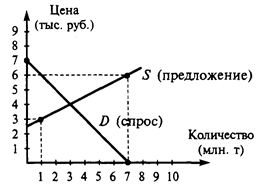Experimental part
A potential distribution in a thin conducting layer is used in this work as a two-dimensional model for an electrostatic field. To measure potential, a bridge is used (fig. 11.1). Two metal electrodes A and B are pressed to the sheet of paper with a conducting layer. Voltage U o = 6.3 V passes from the source to electrodes and lower terminals of the potentiometer. Probe P is connected to the sliding contact S through terminals of vertical deflection of the oscilloscope (input Y). The oscilloscope is used in the work as an indicator of presence of a potential difference. When the probe touches the surface of the conducting paper we observe a signal on oscilloscope screen (as a vertical intercept, height of which is proportional to a potential difference between a point of contact and sliding contact S). If potential at the point of contact is equal to one at sliding contact, a dot is seen on the screen.
|





